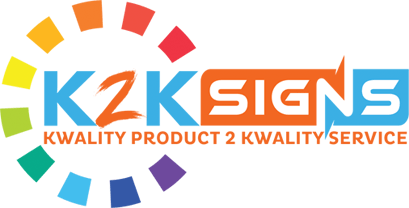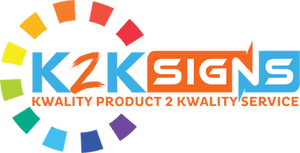Fire Safety Signs in Commercial Buildings: What’s Required in Australia?
Commercial buildings in Australia must display compliant fire safety signs to guide occupants to exits and firefighting equipment.
These signs are mandated under Australian Standard AS 1319 and enforced by state-based fire and building regulations.

Quick Reference: Fire Safety Sign Types Required
| Sign Type | Required For | Colour Code |
|---|---|---|
| Exit Signs | Every designated exit | Green/White (AS/NZS 2293) |
| Directional Exit Signs | Corridors, stairwells, and escape paths | Green/White |
| Fire Extinguisher Location | Above/next to fire extinguishers | Red/White |
| Fire Hose Reel Signs | Above hose reels | Red/White |
| Fire Alarm Signs | Manual alarm call points | Red/White |
| Fire Door Signage | Doors in evacuation routes | Text instructions |
| No Smoking & Flammable Warnings | Areas with ignition risks (e.g. fuel storage) | Yellow or Red/Black |
Why Are Fire Safety Signs Legally Required in Commercial Properties?
Fire safety signs are mandatory in Australia because they support emergency preparedness and legal compliance. They reduce confusion, help occupants locate exits and equipment fast, and ensure a safe evacuation.
Why emergency signage matters for every business
These signs also enable compliance with audits, WHS standards, insurance conditions, and tenancy agreements. Failing to display correct signage can result in fines, liability exposure, or failed inspections.
What Are the Mandatory Fire Safety Signs in Australian Buildings?
All commercial buildings must display a core set of fire safety signs per AS 1319 and local regulations. These signs apply to offices, warehouses, schools, shopping centres, and public facilities.
Required fire signs across Australia:
-
Exit Signs – Illuminated, positioned above exit doors, must operate during power outages using backup systems.
-
Directional Exit Signs – Guide foot traffic to exits via arrows in corridors, stairwells, and passageways.
-
Fire Extinguisher Signs – Placed directly above or beside extinguishers, indicating extinguisher type.
-
Fire Hose Reel Signs – Marked with red backgrounds and white symbols, mounted above hose reels.
-
Manual Alarm Signs - Clearly label break-glass points for activating fire alarms.
-
Fire Door Labels - To maintain door integrity, show instructions like "Keep Shut" or "Do Not Obstruct"
-
Hazard Warnings – For “No Smoking” and flammable material zones to prevent ignition risks.
Check out our Fire Safety Signs collection to learn more about these signs.
How to Conduct a Fire Safety Signage Audit
Auditing fire signage ensures ongoing compliance with fire regulations and WHS laws. The goal is to verify visibility, positioning, illumination, and material compliance.
Steps to audit signage in a commercial property:
-
Inspect every exit route and fire equipment location.
-
Ensure signs aren’t obstructed, faded, or incorrectly placed.
-
Test illumination and battery backup for exit signs.
-
Confirm signage aligns with updated layouts after renovations.
-
Keep a record of each sign’s location and condition.
-
Consult a licensed provider familiar with AS 1319 and state-specific requirements.
Common Fire Safety Sign Mistakes in Australian Buildings
Incorrect fire signage puts building occupants at risk and can lead to fines or failed certifications. Property managers often overlook the basics.
Frequent errors include:
-
Using the wrong colour or symbol combinations
-
Installing signs too high or behind obstructions
-
Not updating signs after floor plan changes
-
Forgetting to label newly installed equipment
-
Using non-compliant materials or poor visibility finishes
Who Is Responsible for Fire Safety Signs?
The property owner or building manager holds legal responsibility for fire signage compliance. This includes installation, inspection, and maintenance.
Who conducts inspections?
Local councils, fire brigades, or building certifiers typically check signage during fire safety audits. Non-compliance can lead to improvement notices or legal penalties.
Are Fire Signage Rules the Same in Every State?
While AS 1319 applies nationwide, each Australian state enforces its own signage codes through building and fire safety laws.
State-specific compliance:
-
NSW – Environmental Planning and Assessment Regulation 2000
-
VIC – Building Code of Australia with state amendments
-
QLD – Building Fire Safety Regulation 2008
-
SA & WA – Enforced through local building laws and fire departments
Why Choose K2K Signs for Fire Safety Compliance?
K2K Signs provides AS-compliant, state-specific fire safety signage solutions for commercial properties. From fast production to expert audits and installation, we’re trusted by:
-
Facility managers and OH&S teams
-
National retail chains and commercial builders
-
Schools, universities, and aged care providers
We handle everything from design to delivery, backed by industry knowledge and WHS expertise.
FAQs About Fire Safety Signs in Australia
How often should signage be updated?
Annually or after layout changes. Damaged, outdated, or non-compliant signs must be replaced immediately.
Are glow-in-the-dark signs allowed?
Yes, if compliant with AS/NZS 2293. They must meet visibility standards during a power failure.
Can I print my own fire safety signs?
No. Self-printed signs won’t comply with AS 1319. Use certified materials and correct iconography.
What colour are fire-related signs?
Red background with white text or symbols. This applies to extinguishers, alarms, and hose reels.
Who checks signage compliance?
Local fire authorities or council inspectors usually conduct checks during scheduled audits.

